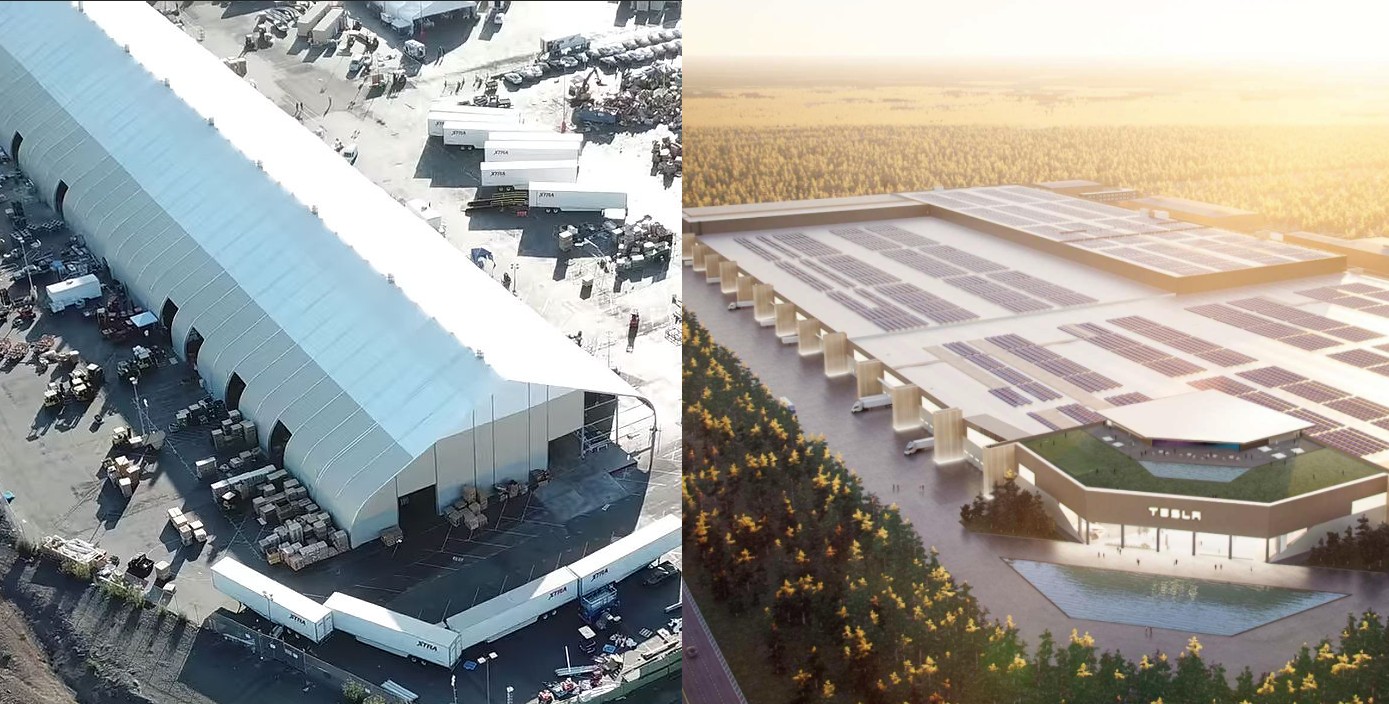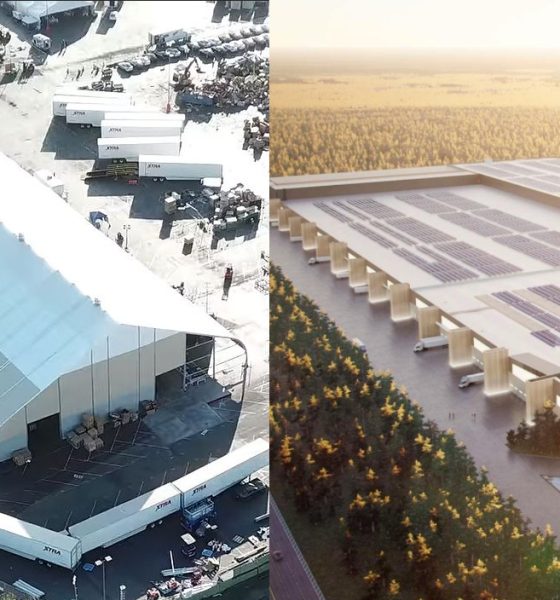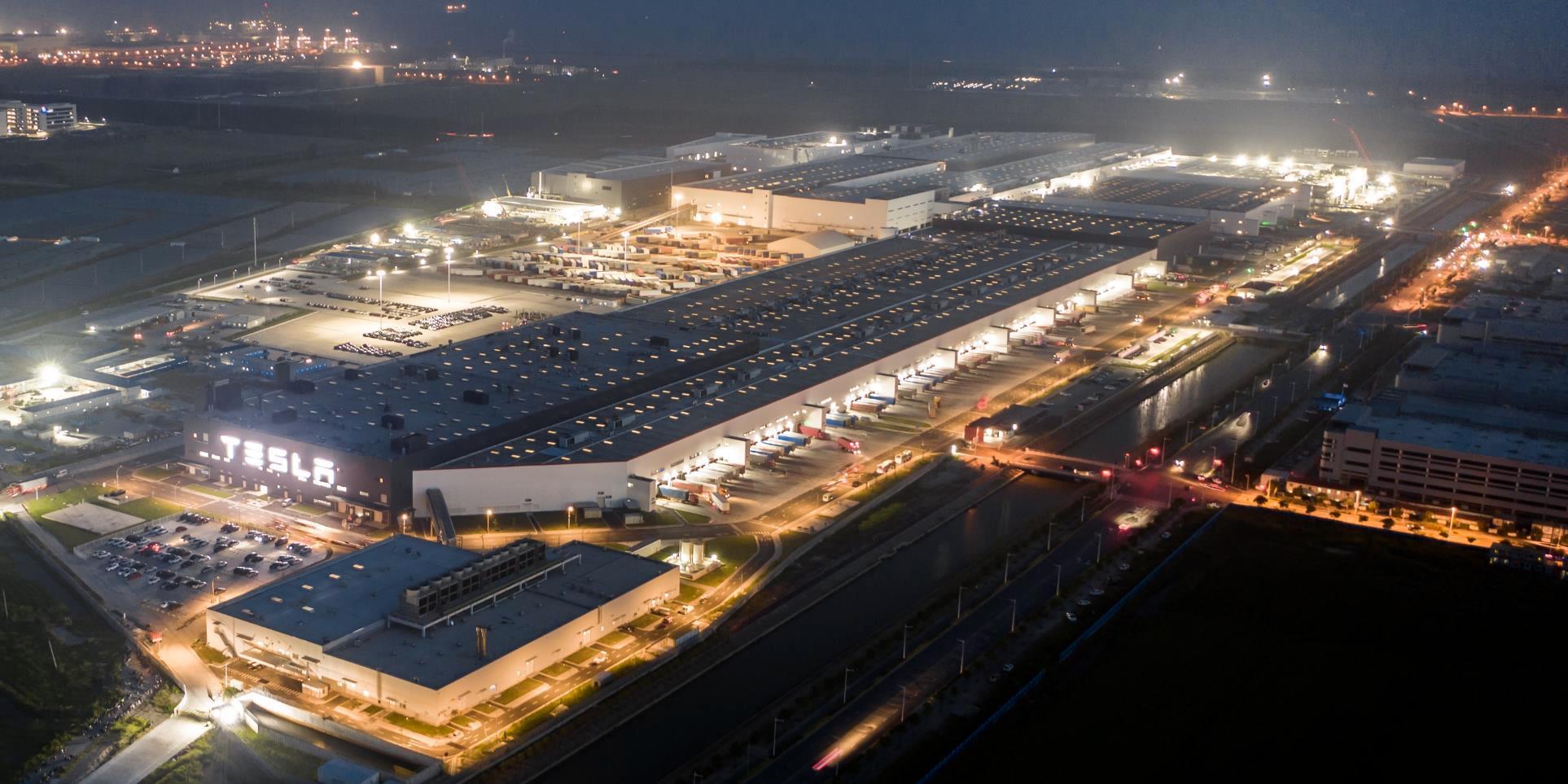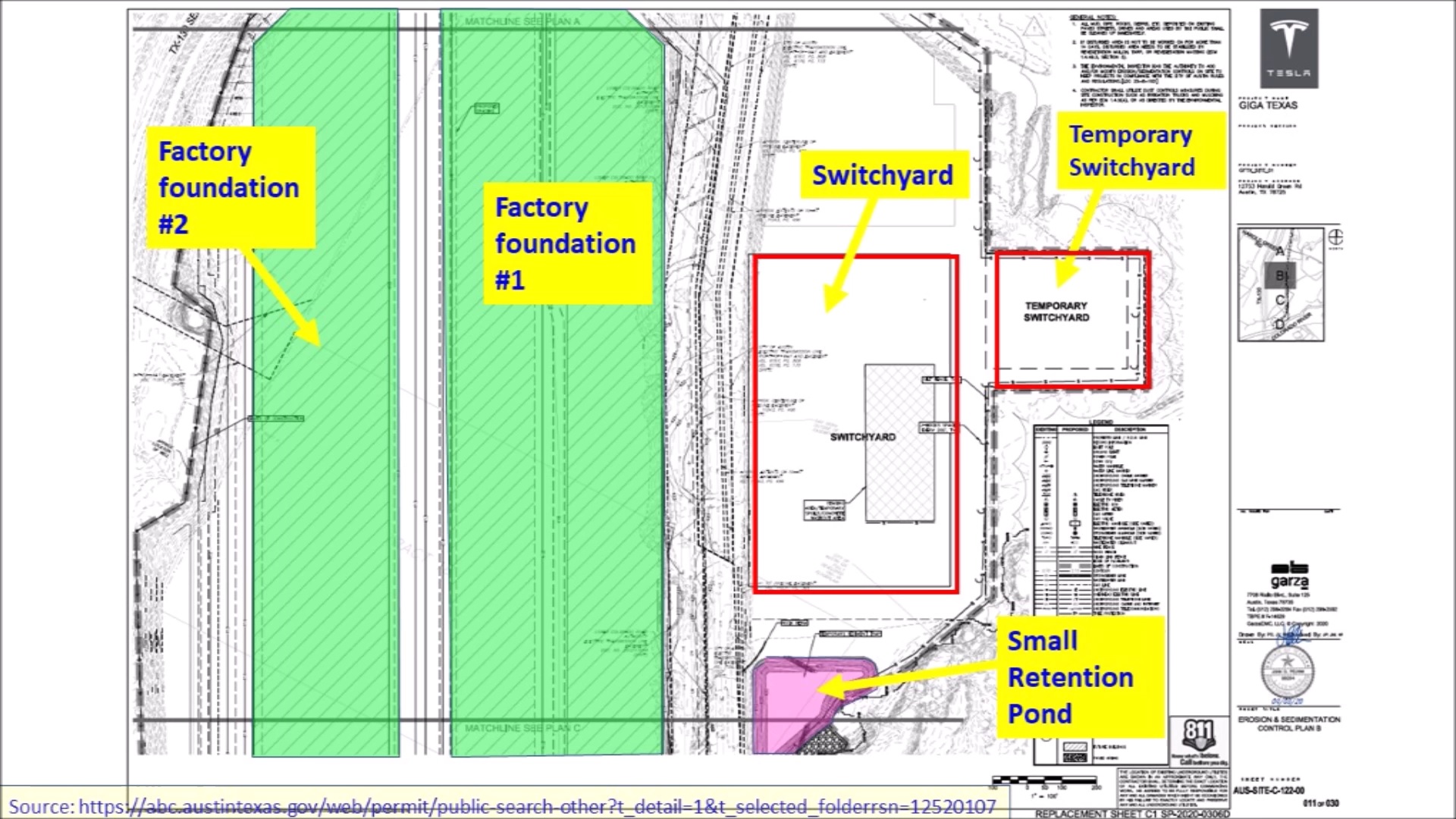

News
Tesla’s Gigafactory formula rose from a humble “tent” at the Fremont Factory
Back in 2018, Tesla was in a very different place. The company was struggling to release the Model 3, and it was behind on Elon Musk’s aggressive self-imposed vehicle production targets. The Fremont Factory’s assembly lines were not producing enough Model 3s, and it seemed like the company was poised to fail. Critics and shorts circled Tesla like sharks smelling blood in the water. But something unexpected happened, and things were never the same after.
Throwing convention out the window, Tesla built another Model 3 line inside a massive sprung structure at the Fremont Factory grounds, which CEO Elon Musk fondly called a “tent” online. The structure, dubbed as GA4, was mocked to the highest degree, used as a joke by critics, and dismissed outright by skeptics. However, what was almost unknown at the time was that Tesla might have actually stumbled into something special with its sprung structure-based line. By building a simple, straight, Model 3 line inside a “tent,” Tesla seems to have effectively created a solid Gigafactory formula.
No standard automotive solution could be built in time, so we created a new solution. It is working & has slightly higher quality than the more traditional general assembly line. Perhaps most surprising is that the total cost of production in the Sprung tent is lower.
— Elon Musk (@elonmusk) June 27, 2018
A Practical Concept
The sprung structure-based Model 3 line was the brainchild of Automotive President Jerome Guillen, widely known as Elon Musk’s “problem solver” back in the Model S’ early days. The “tent”-based line followed a relatively simple system, with vehicles being assembled progressively the further they moved into the tent. Even GA4’s loading bays were placed on the sides of the structure, allowing Tesla to take deliveries into the line efficiently. Musk was enthusiastic about the sprung structure on Twitter, noting not long after the “tent” was built that the vehicles produced in the site had “slightly higher quality” than cars made elsewhere.
These humble but creative beginnings appear to have become the heart of Tesla’s Gigafactory formula, one used in Giga Shanghai and Giga Berlin, and seemingly improved further with Gigafactory Texas. This could be seen in the design and processes that Tesla has adopted so far in its Shanghai and Berlin plants, both of which invoke the image of a scaled-up, refined, and optimized version of Fremont’s “tent.”

A Gigafactory Formula
Tesla critics typically overlook the fact that the Fremont Factory is a legacy car plant at its core. It’s an expansive facility, and it is impressive in its own right, but it’s not a site developed specifically to produce all-electric cars. Thus, for the Model S, Model X, and the Model 3’s early days, Tesla was essentially developing a system that makes EVs at scale using a facility designed initially to manufacture cars equipped with the internal combustion engine.
Of course, Tesla has made numerous adjustments to make the Fremont Factory into one of the most advanced electric vehicle plants in the market. However, it is difficult not to be impressed with Tesla’s quick production ramp and flexibility in Gigafactory Shanghai, arguably the first EV factory that the company built using its GA4 formula, with its simple production lines to its numerous loading bays at its side. This concept seems to have been carried over to Gigafactory Berlin, which is expected to ramp its operations at a rate that rivals even that of Giga Shanghai.

A Matter of Scale
Ultimately, it appears that GA4 was Tesla’s “eureka” moment of sorts, at least for its electric vehicle factories. By scaling up and refining the sprung structure-based concept, Tesla was able to create monster factories like Giga Shanghai, and later this year, Gigafactory Berlin as well. However, this is not all as Tesla seems to be adopting an updated design for Gigafactory Texas, with its three main buildings built parallel with each other. Little is known about the reasons behind Giga Texas’ design, but there’s little doubt that the expansive facility will be very impressive when completed nonetheless.
Prior to the Model 3’s “production hell,” Elon Musk spoke about Tesla’s “Alien Dreadnought” factories, which are supposed to be so automated and advanced that they would resemble alien facilities featured in sci-fi fiction. Tesla seems to have shelved this idea following the Model 3’s challenges in its initial production ramp. With an established Gigafactory formula of sorts in its repertoire, however, and coupled with innovations such as the Model Y’s megacasts, Elon Musk’s dreadnoughts may not be too far into the future at all.
Don’t hesitate to contact us for news tips. Just send a message to tips@teslarati.com to give us a heads up.

News
Tesla is not sparing any expense in ensuring the Cybercab is safe
Images shared by the longtime watcher showed 16 Cybercab prototypes parked near Giga Texas’ dedicated crash test facility.

The Tesla Cybercab could very well be the safest taxi on the road when it is released and deployed for public use. This was, at least, hinted at by the intensive safety tests that Tesla seems to be putting the autonomous two-seater through at its Giga Texas crash test facility.
Intensive crash tests
As per recent images from longtime Giga Texas watcher and drone operator Joe Tegtmeyer, Tesla seems to be very busy crash testing Cybercab units. Images shared by the longtime watcher showed 16 Cybercab prototypes parked near Giga Texas’ dedicated crash test facility just before the holidays.
Tegtmeyer’s aerial photos showed the prototypes clustered outside the factory’s testing building. Some uncovered Cybercabs showed notable damage and one even had its airbags engaged. With Cybercab production expected to start in about 130 days, it appears that Tesla is very busy ensuring that its autonomous two-seater ends up becoming the safest taxi on public roads.
Prioritizing safety
With no human driver controls, the Cybercab demands exceptional active and passive safety systems to protect occupants in any scenario. Considering Tesla’s reputation, it is then understandable that the company seems to be sparing no expense in ensuring that the Cybercab is as safe as possible.
Tesla’s focus on safety was recently highlighted when the Cybertruck achieved a Top Safety Pick+ rating from the Insurance Institute for Highway Safety (IIHS). This was a notable victory for the Cybertruck as critics have long claimed that the vehicle will be one of, if not the, most unsafe truck on the road due to its appearance. The vehicle’s Top Safety Pick+ rating, if any, simply proved that Tesla never neglects to make its cars as safe as possible, and that definitely includes the Cybercab.
Elon Musk
Tesla’s Elon Musk gives timeframe for FSD’s release in UAE
Provided that Musk’s timeframe proves accurate, FSD would be able to start saturating the Middle East, starting with the UAE, next year.

Tesla CEO Elon Musk stated on Monday that Full Self-Driving (Supervised) could launch in the United Arab Emirates (UAE) as soon as January 2026.
Provided that Musk’s timeframe proves accurate, FSD would be able to start saturating the Middle East, starting with the UAE, next year.
Musk’s estimate
In a post on X, UAE-based political analyst Ahmed Sharif Al Amiri asked Musk when FSD would arrive in the country, quoting an earlier post where the CEO encouraged users to try out FSD for themselves. Musk responded directly to the analyst’s inquiry.
“Hopefully, next month,” Musk wrote. The exchange attracted a lot of attention, with numerous X users sharing their excitement at the idea of FSD being brought to a new country. FSD (Supervised), after all, would likely allow hands-off highway driving, urban navigation, and parking under driver oversight in traffic-heavy cities such as Dubai and Abu Dhabi.
Musk’s comments about FSD’s arrival in the UAE were posted following his visit to the Middle Eastern country. Over the weekend, images were shared online of Musk meeting with UAE Defense Minister, Deputy Prime Minister, and Dubai Crown Prince HH Sheikh Hamdan bin Mohammed. Musk also posted a supportive message about the country, posting “UAE rocks!” on X.
FSD recognition
FSD has been getting quite a lot of support from foreign media outlets. FSD (Supervised) earned high marks from Germany’s largest car magazine, Auto Bild, during a test in Berlin’s challenging urban environment. The demonstration highlighted the system’s ability to handle dense traffic, construction sites, pedestrian crossings, and narrow streets with smooth, confident decision-making.
Journalist Robin Hornig was particularly struck by FSD’s superior perception and tireless attention, stating: “Tesla FSD Supervised sees more than I do. It doesn’t get distracted and never gets tired. I like to think I’m a good driver, but I can’t match this system’s all-around vision. It’s at its best when both work together: my experience and the Tesla’s constant attention.” Only one intervention was needed when the system misread a route, showcasing its maturity while relying on vision-only sensors and over-the-air learning.
News
Tesla quietly flexes FSD’s reliability amid Waymo blackout in San Francisco
“Tesla Robotaxis were unaffected by the SF power outage,” Musk wrote in his post.

Tesla highlighted its Full Self-Driving (Supervised) system’s robustness this week by sharing dashcam footage of a vehicle in FSD navigating pitch-black San Francisco streets during the city’s widespread power outage.
While Waymo’s robotaxis stalled and caused traffic jams, Tesla’s vision-only approach kept operating seamlessly without remote intervention. Elon Musk amplified the clip, highlighting the contrast between the two systems.
Tesla FSD handles total darkness
The @Tesla_AI account posted a video from a Model Y operating on FSD during San Francisco’s blackout. As could be seen in the video, streetlights, traffic signals, and surrounding illumination were completely out, but the vehicle drove confidently and cautiously, just like a proficient human driver.
Musk reposted the clip, adding context to reports of Waymo vehicles struggling in the same conditions. “Tesla Robotaxis were unaffected by the SF power outage,” Musk wrote in his post.
Musk and the Tesla AI team’s posts highlight the idea that FSD operates a lot like any experienced human driver. Since the system does not rely on a variety of sensors and a complicated symphony of factors, vehicles could technically navigate challenging circumstances as they emerge. This definitely seemed to be the case in San Francisco.
Waymo’s blackout struggles
Waymo faced scrutiny after multiple self-driving Jaguar I-PACE taxis stopped functioning during the blackout, blocking lanes, causing traffic jams, and requiring manual retrieval. Videos shared during the power outage showed fleets of Waymo vehicles just stopping in the middle of the road, seemingly confused about what to do when the lights go out.
In a comment, Waymo stated that its vehicles treat nonfunctional signals as four-way stops, but “the sheer scale of the outage led to instances where vehicles remained stationary longer than usual to confirm the state of the affected intersections. This contributed to traffic friction during the height of the congestion.”
A company spokesperson also shared some thoughts about the incidents. “Yesterday’s power outage was a widespread event that caused gridlock across San Francisco, with non-functioning traffic signals and transit disruptions. While the failure of the utility infrastructure was significant, we are committed to ensuring our technology adjusts to traffic flow during such events,” the Waymo spokesperson stated, adding that it is “focused on rapidly integrating the lessons learned from this event, and are committed to earning and maintaining the trust of the communities we serve every day.”








